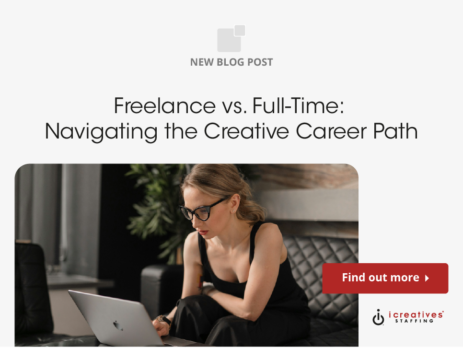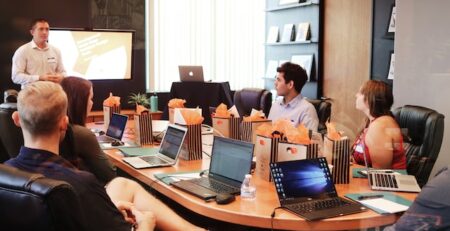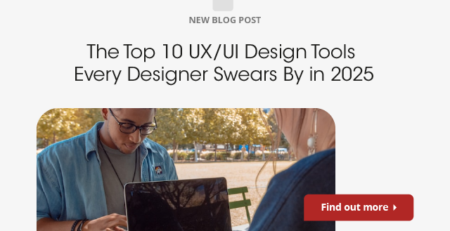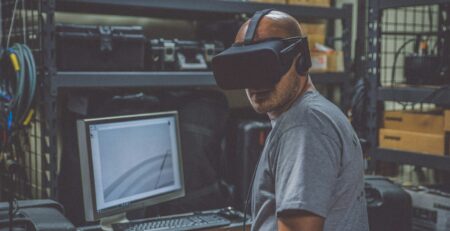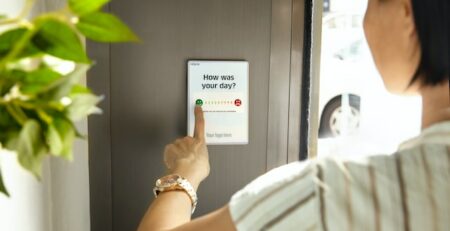Freelance vs. Full-Time: Navigating the Creative Career Path
The decision between pursuing a freelance or a full-time career in the creative industry is pivotal and can significantly influence one’s professional trajectory and personal life. This choice impacts not only the nature of your work but also your lifestyle, income stability, and career development. Each path offers distinct advantages and challenges that can suit different types of personalities, work styles, and life goals.
Freelancing offers flexibility and autonomy, allowing creatives to choose their projects and manage their schedules. This independence can be highly appealing for those who thrive under self-direction and are adept at juggling multiple projects. However, it also requires a robust set of business skills including networking, negotiating, and financial management, which are crucial for sustaining a successful freelance career.
On the other hand, full-time employment provides stability, consistent income, and benefits like health insurance and retirement plans, which can be enticing for individuals seeking long-term security. Full-time roles also often offer more opportunities for teamwork and collaboration, providing a structured environment that can foster professional growth and development.
Understanding the nuances and demands of each path is essential for creatives at any stage of their career. Whether you’re a recent graduate, a seasoned professional considering a change, or somewhere in between, navigating the creative career path requires a deep understanding of your personal goals, industry demands, and the pros and cons of each employment type.
This comprehensive guide delves into the most pressing questions creatives have when choosing between freelance and full-time work, providing insights and strategies to help you make an informed decision that aligns with your career aspirations and lifestyle preferences.
Most Asked Questions About Freelance vs. Full-Time Creative Careers
- What are the benefits and challenges of freelancing compared to full-time employment?
- How can one transition smoothly from freelancing to full-time employment or vice versa?
- How does choosing between freelance and full-time impact personal life and work-life balance?
- What skills are essential for success in both freelance and full-time creative roles?
- What are the future trends in the creative industry for freelancers and full-time professionals?
What are the benefits and challenges of freelancing compared to full-time employment?
Choosing between freelancing and full-time employment in the creative field involves weighing a variety of factors. Freelancers enjoy the freedom to select projects that align with their interests and the flexibility to set their own schedules. This autonomy can lead to greater job satisfaction and a better personal work-life balance. However, freelancing also comes with uncertainties, such as irregular income and the need to continuously seek new clients.
Full-time employment, conversely, offers more predictable financial security and may include benefits such as health insurance, paid leave, and retirement plans. These positions often provide structured opportunities for career progression and skill development through formal training and working in team settings. Yet, this can sometimes result in less control over the type of work and the potential for creative constraints imposed by organizational policies or client demands.
Financial stability is a significant concern for many creatives. Freelancers must adeptly manage their finances, often facing periods of feast or famine. They need to account for taxes, health insurance, and other benefits typically provided by an employer. Full-time employees enjoy a steady paycheck but may find promotions and raises are not always commensurate with their growth in skills and responsibilities.
The social aspect of work also differs greatly between the two paths. Freelancers often work alone, which can be isolating without the daily interaction that comes with a traditional office environment. In contrast, full-time employees benefit from regular collaboration and professional networking that are naturally integrated into their work environment.
Ultimately, the decision between freelancing and full-time work should align with personal career goals, desired lifestyle, and tolerance for risk. Both paths offer unique advantages and challenges, making it essential to consider which aligns best with your professional aspirations and personal needs.
How can one transition smoothly from freelancing to full-time employment or vice versa?
Transitioning between freelancing and full-time employment can be a daunting task, but with the right approach, it can also be a smooth and successful move. For freelancers looking to move into full-time roles, it’s crucial to adapt their resumes and portfolios to highlight their most relevant work and emphasize skills that are transferable to a corporate environment.
Networking plays a critical role in this transition. Utilizing professional connections can help uncover opportunities and get recommendations that might not be accessible through traditional job applications. Engaging in industry events and online forums can also expand one’s professional network and increase visibility to potential employers.
For full-time employees considering a shift to freelancing, it’s important to start building a client base before making the transition. This might involve taking on freelance projects alongside full-time work to build a portfolio and test the waters of freelance work.
Financial preparation cannot be overstated. Ensuring you have enough savings to cover periods of reduced income can alleviate much of the stress associated with the unpredictable nature of freelance work. Additionally, investing time in learning business skills such as contract negotiation, pricing strategies, and client management is crucial for a successful freelance career.
Both transitions require a mindset shift. Moving from freelancing to full-time work might mean adapting to more structured schedules and collaborative environments, while shifting to freelancing requires a high degree of self-motivation and discipline.

How does choosing between freelance and full-time impact personal life and work-life balance?
The choice between freelance and full-time work significantly impacts one’s personal life and work-life balance. Freelancers often appreciate the flexibility to work around personal commitments and control their workload, which can lead to a better balance between personal and professional life. However, this flexibility can also blur the lines between work and home, potentially leading to longer working hours and difficulty in disconnecting from work.
Full-time employees usually have more clearly defined work hours, which can help in separating work from personal life. However, they may experience less flexibility in scheduling and might find it challenging to attend to personal matters during traditional working hours.
For individuals with families or other significant personal commitments, full-time employment might offer more stability and predictability, which is often crucial for planning and managing family life. On the other hand, freelancing can provide the flexibility needed to be more present in daily family activities and responsibilities, though it requires careful management to ensure that work demands do not overrun personal time.
Ultimately, the impact on personal life and work-life balance will depend on individual circumstances, including personal work preferences, family commitments, and financial needs. It’s important for individuals to evaluate how each work style aligns with their personal life and overall well-being.
What skills are essential for success in both freelance and full-time creative roles?
While the specific skills required can vary widely depending on the creative field, certain core skills are universally important for both freelancers and full-time professionals. Technical proficiency in one’s craft, whether it’s graphic design, writing, or another creative discipline, is fundamental. However, soft skills such as communication, time management, and adaptability are equally crucial.
Freelancers, in particular, need strong entrepreneurial skills such as marketing, networking, and financial management. These skills help them attract and retain clients, price their services appropriately, and manage their business’s administrative aspects. Full-time employees, while not needing the same level of business acumen, benefit from understanding the business context of their work, which can enhance their contributions to their employers and advance their careers.
Both freelancers and full-time professionals must be adept at continuous learning and professional development. The creative fields are constantly evolving with new tools, technologies, and methodologies, and staying current is essential for maintaining competitive advantage.
Collaboration is another critical skill, especially for full-time employees who often work in team settings. Freelancers also need to collaborate effectively with clients and occasionally other freelancers or contractors. The ability to work well with others, understand their perspectives, and achieve common goals is vital in both scenarios.
Finally, resilience and the ability to handle rejection and criticism are important for all creatives. Projects might not always go as planned, and ideas may be turned down. The capacity to learn from these experiences and persist in the face of challenges is a key driver of long-term success.
What are the future trends in the creative industry for freelancers and full-time professionals?
The creative industry is undergoing significant transformations due to technological advancements and changing business models. For both freelancers and full-time professionals, understanding these trends is crucial for adapting and thriving in the future landscape.
Remote work has become increasingly prevalent, driven by advancements in digital communication tools. This trend is likely to continue, offering greater flexibility for freelancers and opening up new opportunities for full-time employees to work remotely or in hybrid models.
The gig economy is also expanding, with more companies opting to hire freelancers for project-based work. This shift could lead to more opportunities for freelancers but also increased competition. Therefore, freelancers will need to continuously enhance their skills and perhaps specialize in niche areas to stand out.
For full-time professionals, the emphasis on soft skills such as creativity, emotional intelligence, and strategic thinking is expected to grow. As automation and artificial intelligence take over more routine tasks, the unique human capabilities that creatives bring to the table will become even more valuable.
Sustainability and social responsibility are becoming increasingly important in all sectors, including the creative industries. Professionals who can contribute to projects that prioritize these values, or who can help companies transition towards more sustainable practices, will likely be in high demand.
Lastly, the integration of new technologies such as AI and virtual reality into creative work is creating exciting new opportunities and challenges. Staying ahead of these technological trends and learning how to integrate them into one’s work will be crucial for future success.
Conclusion
In conclusion, navigating the creative career path, whether as a freelancer or a full-time professional, involves a careful consideration of one’s personal and professional goals. The flexibility and autonomy of freelancing are attractive but come with the need for strong business acumen and tolerance for uncertainty. Full-time employment offers stability and structured growth but may involve less flexibility and creative freedom.
Understanding the inherent benefits and challenges of each path, and how they align with individual life circumstances and career aspirations, is crucial. Additionally, staying adaptable and continuously developing both technical and soft skills will play a critical role in achieving long-term success in the ever-evolving creative industry.
As the industry continues to evolve, driven by technological advancements and changing societal expectations, both freelancers and full-time professionals must remain agile, continuously seeking to understand and anticipate future trends. This proactive approach will enable them to not only survive but thrive in the dynamic field of creative work.
Ultimately, the choice between freelance and full-time work should be guided by a thorough assessment of personal strengths, career goals, and lifestyle preferences. By making informed decisions and preparing adequately for the challenges and opportunities ahead, creatives can successfully navigate their career paths and achieve their professional and personal objectives.
For more insights and resources on managing creative careers, consider exploring additional topics such as handling difficult research participants and human-centered design.
In today’s competitive market, finding the right creative and marketing expert can be a challenge. But with icreatives, you’re in experienced hands. With 37 years in staffing and a track record of matching more than 10,000 employees to over 1,000 companies worldwide, we know how to connect you with the best. Plus, you only pay if you hire—there’s no risk, only results. Ready to find your perfect creative or marketing expert? HIRE WITH ICREATIVES today!

